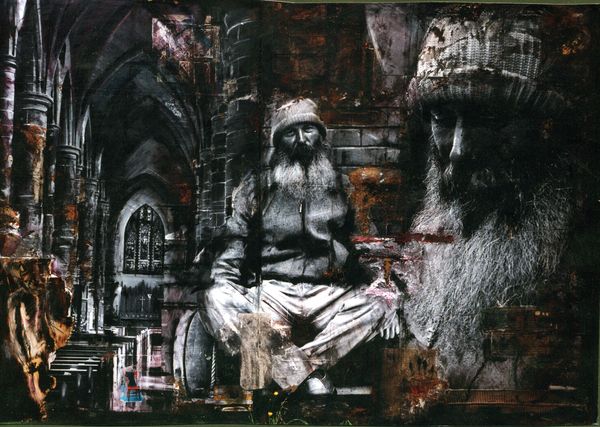Thoughts on Empathy Narrative:
I have encountered empathy narratives a couple times in my high school education. At that time, these exercises were small, and leading towards a larger assignment, so they made little impact for me. I had forgotten about them until having to read Robert Dalton’s article, “Imagination and Art Appreciation: The Empathy Narrative”. I appreciate the examples of student’s work within this article, as well as the list of prompts about what to start thinking of when starting the empathy narrative process. The possibilities for exercises and projects with this method seem endless. It could easily be made into a short, 20 minute activity at the beginning of class, or even a longer project.
There sorts of exercises would be a great way to get student’s to express their worldview and experience experiences different from their own. I am interested with the example Dalton makes with the students responding to Ken Flett’s image, “Alister Starbuck and His Book Of Revelations”. This is difficult subject matter and that is illustrated in the three examples shared, as well as the other students’ work that is only mentioned. Some students choose to take on the subject in first person, some in second or third. Though who are uncomfortable or judgmental of the homeless, seem to separate themselves through their chosen POV. In an English class setting, I might make first person POV a requirement for this specific image, or something like it, so that the student are forced out of their social comfort zone and made to participate in the empathy side of the discussion.

“Man raising his fist for Black Lives Matter”, Thomas de LUZE, Unsplash
So many social justice narratives could be brought up into a class through empathy narratives. The BLM moment, Indigenous right and reconciliation, the homeless camps, Feminism, and so much more. Art has such an impact of social issues, and this could give students’ an avenue to express/reflect on their opinions, and emphasis with an issue they may not be directly a part of. Students can start to learn where they stand on certain issues and develop stronger social engagement and reasonability.
As a teacher candidate with both English and Art as my teachable, I am delighted to be reintroduced to this concept. This sort of exercise could be used as a cross-curricular activity, between an English and Art class. the art students’ painting or drawings would be given to the English class, where the English students could imagine and write a short story based on the art. Without having context from the artist, the writers would come up with their own understanding of the art. I imagine displaying these projects together in a gallery walk, where the short story is placed next to the painting and artist statement. This is just a one the spot, rough idea, but I am suddenly very excited about the idea.

Leave a Reply
You must be logged in to post a comment.